Q&A | Eben Russell explains the evolution of Ampacity Renewables
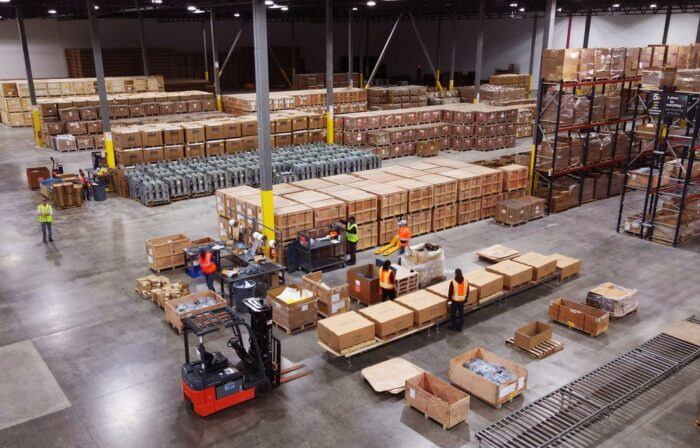
Earlier this year, RP Construction Services rebranded as Ampacity Renewables. A member of the Quanta Services family of companies, Ampacity specializes in end-to-end structural and electrical solutions with a forward-thinking approach for clean energy projects, and the ability to orchestrate the full process from engineering to kitting to installation.
Eben Russell founded RPCS in 2014, but the business really came of age during COVID. They opened a warehouse operation in Mississippi and started to focus on enabling tracker projects as a value-added distributor instead of always doing it as a ‘turnkey’ installer.
“Our sales have doubled since then,” Russell tells us. “We’ve opened two additional warehouses in the last three years and just celebrated the five-year anniversary of the MS facility back in April. We’ve got a team of over 300 spread out across the U.S.”
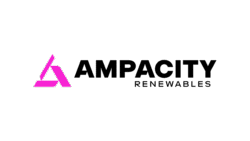
The team built a reputation in the industry as a trusted partner with a one-stop-shop approach, and the evolution of the company necessitated a new brand identity. The team selected a well-known industry term — “Ampacity,” defined as the maximum amount of current that a conductor can safely carry — to evoke the concept of electrification and acceleration, as well as to represent the company’s above-and-beyond approach to serving its customers.
I recently spoke to Ampacity founder and president Eben Russell about the name change, the company’s expanded capabilities, and general industry trends. Read on for the rest of my interview with Eben.
Why change the company name from RP Construction Services?
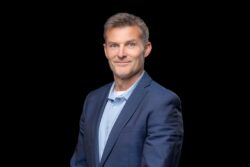
Russell: When we first started the company, we were on a mission to sell trackers at a time when very few contractors had experience assembling them. We trained our own crews and filled a key gap in the marketplace. A lot of our customers in the early days were only comfortable buying a tracking system if they knew we would build it for them, so we did.
Obviously, the market has changed a lot over the past ten years, and so have we. We still do a decent volume of installs every year, but today the bulk of our business is value-added distribution. We sell essential solar construction supplies to other contractors and developers. We know how to make our customers successful because we’ve been in their shoes. The way we do things is all about helping steer around the stumbling blocks that every project encounters at one point or another. We’ve seen it all.
We changed our name to make it easier for the marketplace to understand what we’re about and where we’re going. Our business carries a constant river of metal into our warehouses and out to small solar sites – truck after truck after truck. And we’re going further. Late last year, we started distributing electrical goods in addition to tracker and pile. There’s so much value we can offer because of the level of familiarity we create with each site, and because everything we do is done with the field in mind.
Ultimately, the name ‘Ampacity’ gets right to the core of who we are – a value-added distributor operating at maximum capacity for our customers.
What can you tell me about the company’s expanded capabilities?
Russell: In the past 6 months, we’ve focused on building two new areas of the business. First, electrical distribution. We now support customers with wire harnesses, wire management products, MV cable, termination kits, and sectionalizing cabinets. To support this new line of products, we’ve invested in inventory, warehouse space, and value-added services like custom reels and MV kitting.
The second area that we’ve expanded is our service business to support the installed base. When Ampacity started, there was less than 20 GW of operating solar capacity in the US. Now there’s more than ten times that amount, and plants that are five, six, seven years old are needing goods and services to solve performance problems and run safely. We can help.
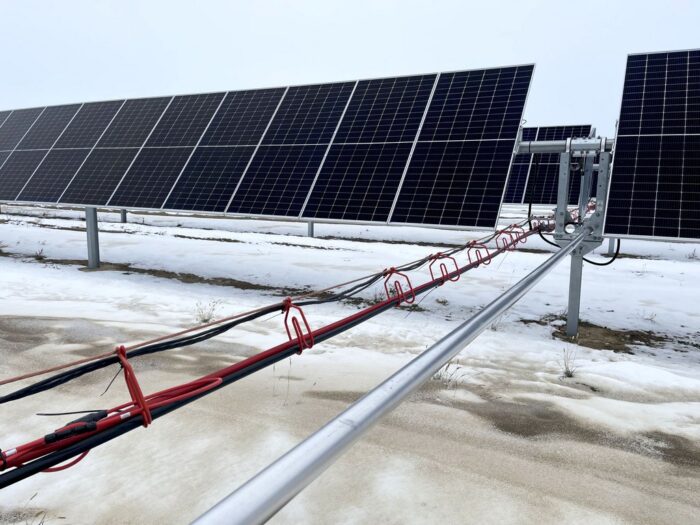
Can you explain Ampacity’s distribution approach? What does that mean for your customers?
Russell: We talk about four things that really make us tick. The first one is expert sales. Our salespeople are not cold callers – they’re product experts and problem solvers. They get deep into drawing sets and geotechnical reports. At Ampacity, sales is about helping customers get to the right answer, not just taking their order.
The second thing that defines our approach is premium goods. We partner with leading manufacturers so that we can offer our customers the highest quality products. The whole business is oriented around “no apology technology”.
Number three is value from design. Our design team makes major design contributions to most of the projects we supply. In some cases, we have an active engineering dialogue with the project owner even if we end up transacting with their contractor at NTP. Applications engineering is core to who we are and how we think about distribution. One of our first things we did in launching our electrical distribution effort was hiring our first electrical designer.
Finally, our commitment to the field sets us apart. The head of our warehouse operations used to be one of our best field superintendents. The head of our electrical warehousing effort spent the bulk of his career on project sites. Everything we do in the warehouse – from pre-kitting tracker rows to overnighting a mission critical part – is about helping crews succeed in the field.
What size project are your “bread and butter”?
Russell: Our sweet spot is 1-100 MW, but we usually do a couple projects per year that are larger than that. Because there are usually statutory limits on project size in community solar states, we see a high number of projects under 10 MW. We provided trackers for over 300 projects last year.
Where do you see the most opportunity in the solar industry? Is it all about data centers and AI? Are there other areas spiking in the market?
Russell: Data centers and AI are definitely big growth drivers for any business in our sector right now. It boils down to a basic supply & demand problem. There isn’t enough generation for all the load that’s coming – the energy demands of AI infrastructure are staggering and growing exponentially. From a climate perspective, it feels like a bit of a setback, and we’re on a mission to help the industry respond. Speed of deployment is a huge theme, and solar is the best option from that standpoint.
The increase in power demand isn’t just impacting large solar projects. A lot of regulators are searching for ways to reduce the impact of all this additional demand on individuals and small businesses. Keeping rates under control won’t be easy.
One option that keeps gaining traction across the country is community solar. The community solar frameworks in states like New York and Illinois have been really effective at lowering energy costs for solar subscribers. I think we’ll see several additional markets open up in the next couple years. I also wouldn’t be surprised to see more interest in larger behind-the-meter projects and microgrids as customers try to reduce their exposure to utility rates.
It’s a big moment for entire power & utilities industry. The needs are great, but so are the opportunities. As a supply chain partner, we’re setting ourselves up to move more goods faster and faster so that things go smoothly when all the financing and permitting is done and it’s time to build.
What others trends do you see emerging in the solar industry?
Russell: The solar industry is moving at breakneck speed. The pressure is on to deliver projects quickly, accurately, efficiently, and safely. We’re seeing a lot of momentum in the DG space as demand grows and grid constraints tighten. Supply chain challenges are still in play.
Customers need reliable partners who bring expertise and value to their growing portfolios and project pipelines. We collaborate constantly with our customers and mitigate risks through our design capability, manufacturer partnerships, stocking and logistics strategies, and fulfillment operations. Customers want expertise, not just materials, so we help them de-risk projects through better planning, better design, and better execution to stay ahead of the curve.
What’s next for Ampacity?
Russell: We’ve already talked about some big growth areas for us. Electrical distribution and services to the installed base will continue to be focus areas for the foreseeable future. There’s also constant evolution in our base business with new tracker products, changing trends, and new players in the space. Our customers rely on us to stay right on the cutting edge of the tracker market, and we do the work that it takes to stay there.
Finally, there’s always more we can do to improve our customers’ experience with us. I’m excited about some of the software projects we have underway to drive customers’ success in the field. At the end of the day, all of our success comes down to passion for creating a better way.




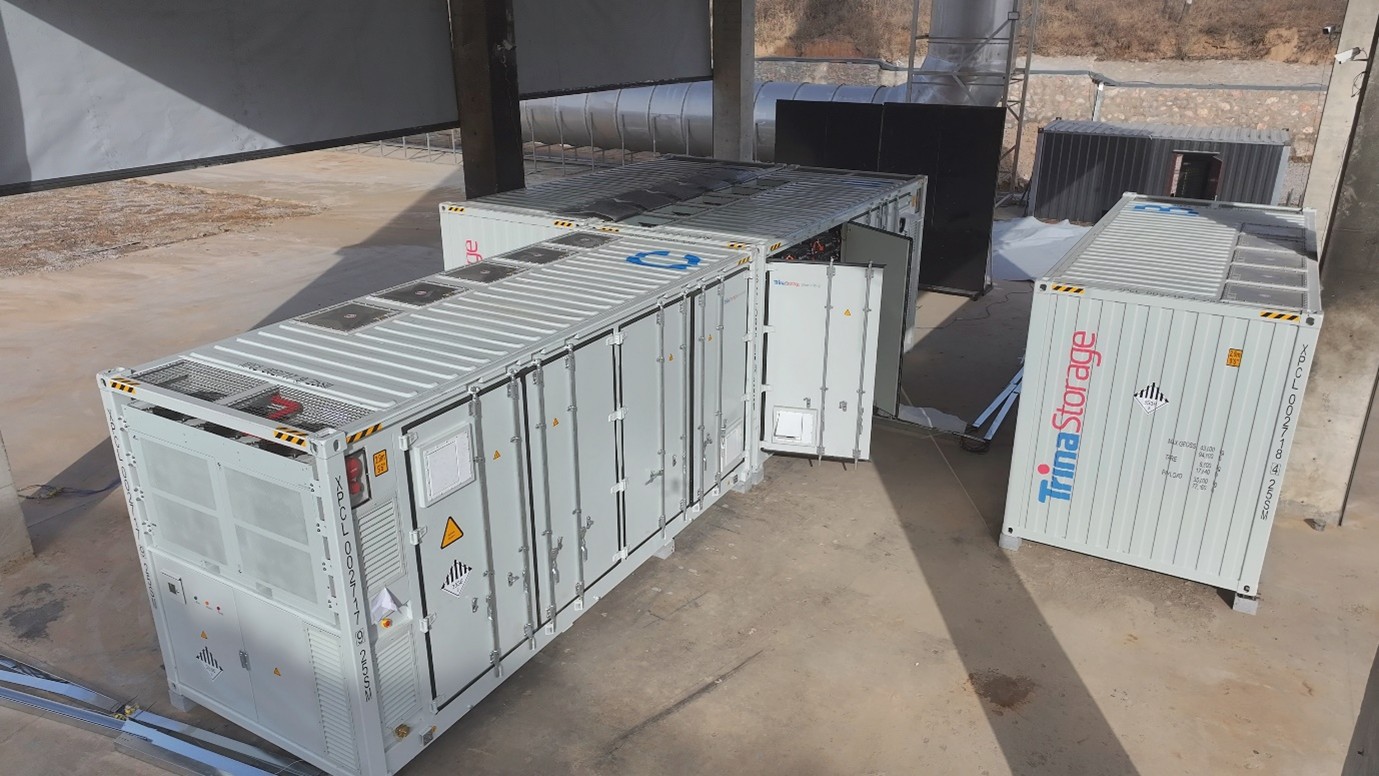
Comments are closed here.